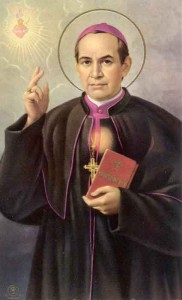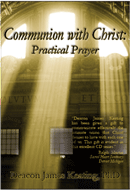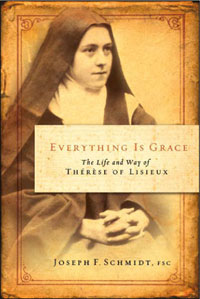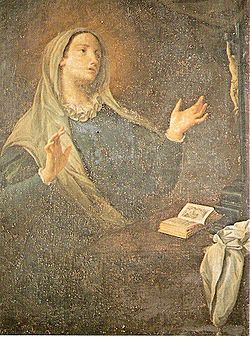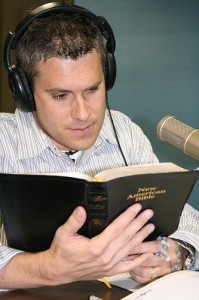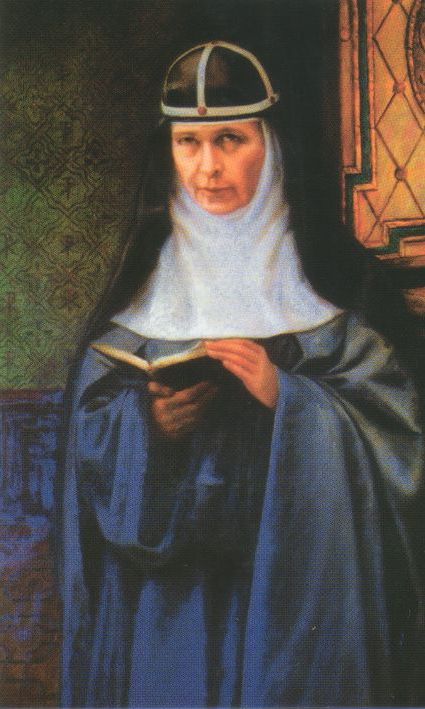‘The love of Christ arouses us, urges us to run, and to fly lifted on the wings of holy zeal . . . The man who burns with the fire of divine love is a son of the Immaculate Heart of Mary, and wherever he goes, he enkindles that flame; he desires and works with all his strength to inflame all men with the fire of God’s love. Nothing deters him: he rejoices in poverty; he labors strenuously; he welcomes hardships; he laughs off false accusations; he rejoices in anguish. He thinks only of how he might follow Jesus Christ and imitate Him by his prayers, his labors, his sufferings, and by caring always and only for the glory of God and the salvation of souls.’ – St. Anthony Mary Claret
A remarkable saint…St. Anthony Mary Claret who lived during the turblent years of the 1800’s in Latin America, namely Cuba. He had a great love for the Blessed Virgin Mary and her Immaculate Heart. More on his life can be found here…
Tags: anthony mary claret, blessed virgin mary, catholic, catholic podcast, catholic prayer, cathollc spirituality, Church, immaculate heart of mary, jesus christ, latin america, love, St. Anthony Mary, St. Anthony Mary Claret, sufferings
This entry was posted on Monday, October 24th, 2011 at 12:52 am
You can follow any responses to this entry through the RSS 2.0 feed.
Heart of Hope Part 3 – What is Redemptive Suffering…using love and the energy of love to redirect pain as an intercessory prayer for another…how it makes sense and is no longer meaningless
[powerpress = “deacon-james-keating”]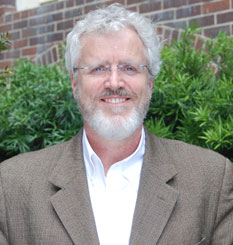
Deacon James Keating, PhD, the director of Theological Formation for the Institute for Priestly Formation, located at Creighton University, in Omaha, is making available to “Discerning Hearts” and all who listen, his series of programs entitled “The Heart of Hope”.
This extraordinarily popular series explores the work of suffering in the Christian life and how God can use it to transform the heart of the individual and the world. 
The “Heart of Hope”  tackles a very tough subject…the gift of suffering in the Christian life. Deacon Keating guides us well.
For more information on the “Institute of Priestly Formation” and for other material available by Deacon Keating, just click here
Don’t forget to pickup a copy of “Communion with Christ” , it is one of the best audio sets on prayer…ever!
Check out Deacon Keating’s “Discerning Heart” page
Tags: catholic, catholic podcast, catholic prayer, cathollc spirituality, communion, discerning heart, hearts, institute for priestly formation, intercessory prayer, james keating, love, redemptive suffering
This entry was posted on Saturday, October 1st, 2011 at 8:00 am
You can follow any responses to this entry through the RSS 2.0 feed.
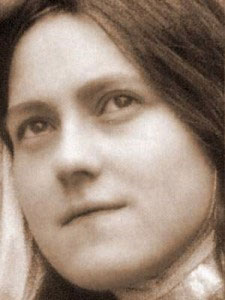 “For me, prayer is a surge of the heart; it is a simple look turned toward heaven, it is a cry of recognition and of love, embracing both trial and joy.” – St. Therese of of Lisieux
“For me, prayer is a surge of the heart; it is a simple look turned toward heaven, it is a cry of recognition and of love, embracing both trial and joy.” – St. Therese of of Lisieux
Sometimes words are not full enough to describe someone.
Therese  is a melody.
A melody of grace lofting lyrically around our hearts in prayer;
a sound which invokes joy and sorrow, smiles and tears,
trust, hope and…love.
I’m not a musician, but I know a beautiful song when I hear it.
Her melody is one you wish never would end,
with Therese, “you hear the song”.
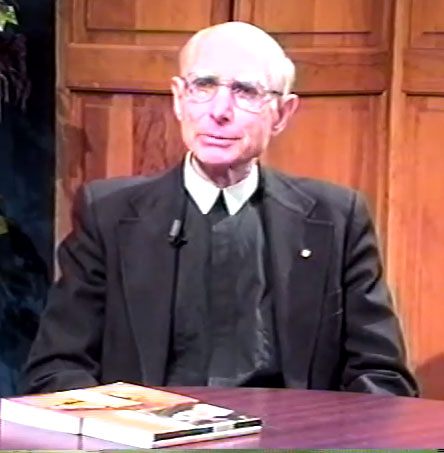 [powerpress]Bruce and I had a chance to speak with Brother Joseph Schmidt about St. Therese. He wrote about her in “Everything is Grace”.
[powerpress]Bruce and I had a chance to speak with Brother Joseph Schmidt about St. Therese. He wrote about her in “Everything is Grace”.
This is my VERY favorite book about St. Therese…it’s wonderful
MY ONLY OCCUPATION IS LOVE
“I do not desire either suffering or death, although both are appealing to me;
it is love alone which really attracts me…
I can ask for nothing with any enthusiasm
except the perfect accomplishment of the Divine Will in my soul,
unhindered by any intrusion of created things.
I can say, with the words of our father, St. John of the Cross,
in his Spiritual Canticle,
‘I drank in the inner cellar of my Beloved, and when I went forth into the meadow
I forgot everything and lost the flock which I used to drive.
My soul has employed all its resources in His service;
now I guard no flock, nor do I have any other duties.
Now my only occupation is love.’
Or again: ‘I know love is so powerful that it can turn
whatever is good or bad in me into profit,
and it can transform my soul into Himself.”
~ St. Thérèse
A MORNING PRAYER WRITTEN BY ST. THERESE
O my God! I offer Thee all my actions of this day for the intentions and for the glory of the Sacred Heart of Jesus. I desire to sanctify every beat of my heart, my every thought, my simplest works, by uniting them to Its infinite merits; and I wish to make reparation for my sins by casting them into the furnace of Its Merciful Love.
O my God! I ask of Thee for myself and for those whom I hold dear, the grace to fulfill perfectly Thy Holy Will, to accept for love of Thee the joys and sorrows of this passing life, so that we may one day be united together in heaven for all Eternity.
Amen.
PRAYER TO ST. THERESE
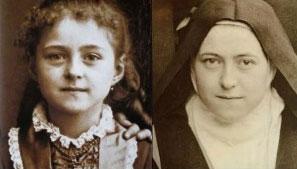 O little St. Theresa of the Child Jesus, who during your short life on earth became a mirror of angelic purity, of love strong as death, and of wholehearted abandonment to God, now that you rejoice in the reward of your virtues, cast a glance of pity on me as I leave all things in your hands. Make my troubles your own – speak a word for me to our Lady Immaculate, whose flower of special love you were – to that Queen of heaven “who smiled on you at the dawn of life.” Beg her as the Queen of the heart of Jesus to obtain for me by her powerful intercession, the grace I yearn for so ardently at this moment, and that she join with it a blessing that may strengthen me during life. Defend me at the hour of death, and lead me straight on to a happy eternity.
O little St. Theresa of the Child Jesus, who during your short life on earth became a mirror of angelic purity, of love strong as death, and of wholehearted abandonment to God, now that you rejoice in the reward of your virtues, cast a glance of pity on me as I leave all things in your hands. Make my troubles your own – speak a word for me to our Lady Immaculate, whose flower of special love you were – to that Queen of heaven “who smiled on you at the dawn of life.” Beg her as the Queen of the heart of Jesus to obtain for me by her powerful intercession, the grace I yearn for so ardently at this moment, and that she join with it a blessing that may strengthen me during life. Defend me at the hour of death, and lead me straight on to a happy eternity.
Amen
Tags: catholic, catholic podcast, catholic prayer, cathollc spirituality, heart, joseph schmidt, joy, love, St. therese little flower, st. therese of lieseux, THERESE
This entry was posted on Saturday, October 1st, 2011 at 12:02 am
You can follow any responses to this entry through the RSS 2.0 feed.
“Standing by the cross of Jesus”
[powerpress=”daily-scripture”]
an excerpt from today’s reflection by Don Schwager:
Does suffering or sorrow weigh you down? The cross brings us face to face with Jesus’ suffering. He was alone. All his disciples had deserted him except for his mother and three women along with John, the beloved disciple. The apostles had fled in fear. But Mary, the mother of Jesus and three other women who loved him were present at the cross. They demonstrate the power of love for overcoming fear (1 John 4:18).
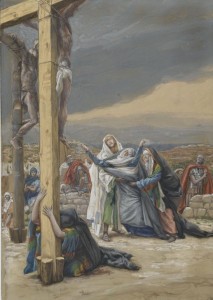 At the beginning of Jesus’ birth, when he was presented in the temple, Simeon had predicted that Mary would suffer greatly – a sword will pierce through your own soul (see Luke 2:33-35). Many have called Mary a martyr in spirit. Bernard of Clairvaux said: Jesus “died in body through a love greater than anyone had known. She died in spirit through a love unlike any other since his.” Mary did not despair in her sorrow and loss, since her faith and hope were sustained by her trust in God and the love she had for her Son. Jesus, in his grief and suffering, did not forget his mother. He entrusted her care to John, as well as John to her. No loss, no suffering can keep us from the love of Christ (Romans 8:35-39). Paul the Apostle says that love bears all things, believes all things, hopes all things, endures all things (1 Corinthians 13:3). We can find no greater proof of God’s love for us than the willing sacrifice of his Son on the cross. Do you know the love that enables you to bear your cross and to endure trial and difficulties with faith and hope in God?
At the beginning of Jesus’ birth, when he was presented in the temple, Simeon had predicted that Mary would suffer greatly – a sword will pierce through your own soul (see Luke 2:33-35). Many have called Mary a martyr in spirit. Bernard of Clairvaux said: Jesus “died in body through a love greater than anyone had known. She died in spirit through a love unlike any other since his.” Mary did not despair in her sorrow and loss, since her faith and hope were sustained by her trust in God and the love she had for her Son. Jesus, in his grief and suffering, did not forget his mother. He entrusted her care to John, as well as John to her. No loss, no suffering can keep us from the love of Christ (Romans 8:35-39). Paul the Apostle says that love bears all things, believes all things, hopes all things, endures all things (1 Corinthians 13:3). We can find no greater proof of God’s love for us than the willing sacrifice of his Son on the cross. Do you know the love that enables you to bear your cross and to endure trial and difficulties with faith and hope in God?
“Lord Jesus Christ, by your death on the cross you have won pardon for us and freedom from the tyranny of sin and death. May I live in the joy and freedom of your victory over sin and death.”
for the full reflection visit : Daily Reading and Meditation
Tags: catholic, catholic podcast, catholic prayer, cathollc spirituality, death, don schwager, gospel of john, Jesus, love, the cross
This entry was posted on Thursday, September 15th, 2011 at 12:01 am
You can follow any responses to this entry through the RSS 2.0 feed.
Is Jesus Calling? A Spiritual Guide to Discerning Your Vocation  with Fr. Paul Hoesing – episode 3: 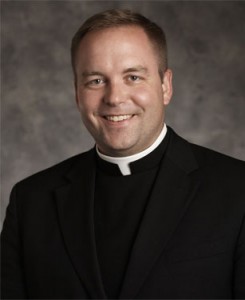 The Third Spiritual Lesson: Trust God. “When the thought of your vocation comes into your mind and heart, if you keep it to yourself in your mind, dwelling on it over and over trying to figure it out or trying to control it or trying to get rid of it, then you will be choosing not to trust.”
The Third Spiritual Lesson: Trust God. “When the thought of your vocation comes into your mind and heart, if you keep it to yourself in your mind, dwelling on it over and over trying to figure it out or trying to control it or trying to get rid of it, then you will be choosing not to trust.”
Questions: Where are the particular classrooms in the general school of dependence where you are being invited to trust in God? What are the storms in your life that make your mind race causing confusion in you? Jesus wants do to something for you there. Focus him. Bring it to him. Desire his love in it.
[powerpress]
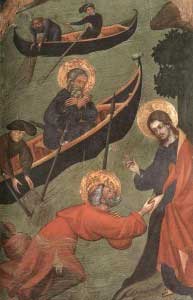 Based on “Is Jesus Calling You To Be A Catholic Priest: A helpful guide”, published by National Conference of Diocesan Vocation Director.
Based on “Is Jesus Calling You To Be A Catholic Priest: A helpful guide”, published by National Conference of Diocesan Vocation Director.
Fr. Paul Hoesing serves as the Vocation Director for the Archdiocese of Omaha, NE.
Check out “For Your Vocation.org”
Tags: archdiocese of omaha, catholic, catholic podcast, catholic prayer, cathollc spirituality, Discerning, discernment, heart, love, married life, NE, Paul Hoesing, religious life, spiritual guide, Spiritual Lesson, vocation director
This entry was posted on Tuesday, March 29th, 2011 at 12:33 am
You can follow any responses to this entry through the RSS 2.0 feed.
Episode 6 – Regnum Novum: Bringing forth the New Evangelization through Catholic Social Teaching with Omar Guiterrez – Value 4 Truth, Freedom, Justice, and Love part 3 “Love”
– Value 4 Truth, Freedom, Justice, and Love part 3 “Love”
Discerning Hearts is blessed to present Omar F. A. Guiterrez, M.A. , Special Assistant to Archbishop George Lucas of the Archdiocese of Omaha, in a groundbreaking series which breaks open the heart of Catholic Social Doctrine.
We encourage you to visit “Regnum Novum – A New Kingdom: A Revolution” Omar Guiterrez’s blog site
 We live at a very special time. The confluence of many things has brought forth the clear need to be able to articulate the Social Teaching of the Catholic Church in a way that is accessible and applicable. This is not to be an effort where high-minded theories are to be bandied about. Rather, this is a time of opportunity wherein we can apply the Social Doctrine to the concrete so as to bring about a New Kingdom, a Revolution. – Omar G. from Regnum Novum
We live at a very special time. The confluence of many things has brought forth the clear need to be able to articulate the Social Teaching of the Catholic Church in a way that is accessible and applicable. This is not to be an effort where high-minded theories are to be bandied about. Rather, this is a time of opportunity wherein we can apply the Social Doctrine to the concrete so as to bring about a New Kingdom, a Revolution. – Omar G. from Regnum Novum
[powerpress]
From episode … 6. Truth, Freedom, Justice, and Love part 3 “Love“
These are the four values of the Social Teaching of the Catholic Church as they’re enumerated in the Compendium and as they were laid out by, again, Blessed Pope John XXIII in Mater et magistra and Pacem in terris. Without these values, the work of social justice becomes an albatross around our necks. It pulls us down, threatening to poison all the work we do, no matter how well intentioned.
We are seeking to build a civilization of love. Love is an encounter with God. Love begets love, and the experience of love can heal many more wounds than can socio-economic trivialities.
(Truth, Freedom and Justice are covered in other episodes)
Also visit Omar’s “Discerning Hearts” page Catholic Social Teaching 101
Tags: archdiocese of omaha, catholic, catholic podcast, catholic prayer, catholic social doctrine, cathollc spirituality, love, new evangelization, social justice, social teaching of the catholic church
This entry was posted on Monday, February 28th, 2011 at 3:04 pm
You can follow any responses to this entry through the RSS 2.0 feed.
VATICAN CITY, 12 JAN 2011 (vatican.va) –
Dear Brothers and Sisters,
After Catherine of Siena and Catherine of Bologna, today I would like to speak to you about another Saint: Catherine of Genoa, known above all for her vision of purgatory. The text that describes her life and thought was published in this Ligurian city in 1551. It is in three sections: her Vita [Life], properly speaking, the Dimostratione et dechiaratione del purgatorio — better known as Treatise on purgatory — and her Dialogo tra l’anima e il corpo (cf. Libro de la Vita mirabile et dottrina santa, de la beata Caterinetta da Genoa. Nel quale si contiene una utile et catholica dimostratione et dechiaratione del purgatorio, Genoa 1551). The final version was written by Catherine’s confessor, Fr Cattaneo Marabotto.
Catherine was born in Genoa in 1447. She was the youngest of five. Her father, Giacomo Fieschi, died when she was very young. Her mother, Francesca di Negro provided such an effective Christian education that the elder of her two daughters became a religious.
When Catherine was 16, she was given in marriage to Giuliano Adorno, a man who after various trading and military experiences in the Middle East had returned to Genoa in order to marry.
Married life was far from easy for Catherine, partly because of the character of her husband who was given to gambling. Catherine herself was at first induced to lead a worldly sort of life in which, however, she failed to find serenity. After 10 years, her heart was heavy with a deep sense of emptiness and bitterness.
A unique experience on 20 March 1473 sparked her conversion. She had gone to the Church of San Benedetto in the monastery of Nostra Signora delle Grazie [Our Lady of Grace], to make her confession and, kneeling before the priest, “receivedâ€, as she herself wrote, “a wound in my heart from God’s immense loveâ€. It came with such a clear vision of her own wretchedness and shortcomings and at the same time of God’s goodness, that she almost fainted.
Her heart was moved by this knowledge of herself — knowledge of the empty life she was leading and of the goodness of God. This experience prompted the decision that gave direction to her whole life. She expressed it in the words: “no longer the world, no longer sin†(cf. Vita Mirabile, 3rv). Catherine did not stay to make her Confession.
On arriving home she entered the remotest room and spent a long time weeping. At that moment she received an inner instruction on prayer and became aware of God’s immense love for her, a sinner. It was a spiritual experience she had no words to  describe ( cf. Vita Mirabile, 4r).
It was on this occasion that the suffering Jesus appeared to her, bent beneath the Cross, as he is often portrayed in the Saint’s iconography. A few days later she returned to the priest to make a good confession at last. It was here that began the “life of purification†which for many years caused her to feel constant sorrow for the sins she had committed and which spurred her to impose forms of penance and sacrifice upon herself, in order to show her love to God.
On this journey Catherine became ever closer to the Lord until she attained what is called “unitive lifeâ€, namely, a relationship of profound union with God.
In her Vita it is written that her soul was guided and instructed from within solely by the sweet love of God which gave her all she needed. Catherine surrendered herself so totally into the hands of the Lord that she lived, for about 25 years, as she wrote, “without the assistance of any creature, taught and governed by God alone†(Vita, 117r-118r), nourished above all by constant prayer and by Holy Communion which she received every day, an unusual practice in her time. Only many years later did the Lord give her a priest who cared for her soul.
Catherine was always reluctant to confide and reveal her experience of mystical communion with God, especially because of the deep humility she felt before the Lord’s graces. The prospect of glorifying him and of being able to contribute to the spiritual journey of others alone spurred her to recount what had taken place within her, from the moment of her conversion, which is her original and fundamental experience.
The place of her ascent to mystical peaks was Pammatone Hospital, the largest hospital complex in Genoa, of which she was director and animator. Hence Catherine lived a totally active existence despite the depth of her inner life. In Pammatone a group of followers, disciples and collaborators formed around her, fascinated by her life of faith and her charity.
Indeed her husband, Giuliano Adorno, was so so won over that he gave up his dissipated life, became a Third Order Franciscan and moved into the hospital to help his wife.
Catherine’s dedication to caring for the sick continued until the end of her earthly life on 15 September 1510. From her conversion until her death there were no extraordinary events but two elements characterize her entire life: on the one hand her mystical experience, that is, the profound union with God, which she felt as spousal union, and on the other, assistance to the sick, the organization of the hospital and service to her neighbour, especially the neediest and the most forsaken. These two poles, God and neighbour, totally filled her life, virtually all of which she spent within the hospital walls.
Dear friends, we must never forget that the more we love God and the more constantly we pray, the better we will succeed in truly loving those who surround us, who are close to us, so that we can see in every person the Face of the Lord whose love knows no bounds and makes no distinctions. The mystic does not create distance from others or an abstract life, but rather approaches other people so that they may begin to see and act with God’s eyes and heart.
Catherine’s thought on purgatory, for which she is particularly well known, is summed up in the last two parts of the book mentioned above: The Treatise on purgatory and the Dialogues between the body and the soul. It is important to note that Catherine, in her mystical experience, never received specific revelations on purgatory or on the souls being purified there. Yet, in the writings inspired by our Saint, purgatory is a central element and the description of it has characteristics that were original in her time.
The first original passage concerns the “place†of the purification of souls. In her day it was depicted mainly using images linked to space: a certain space was conceived of in which purgatory was supposed to be located.
Catherine, however, did not see purgatory as a scene in the bowels of the earth: for her it is not an exterior but rather an interior fire. This is purgatory: an inner fire.
The Saint speaks of the Soul’s journey of purification on the way to full communion with God, starting from her own experience of profound sorrow for the sins committed, in comparison with God’s infinite love (cf. Vita Mirabile, 171v).
We heard of the moment of conversion when Catherine suddenly became aware of God’s goodness, of the infinite distance of her own life from this goodness and of a burning fire within her. And this is the fire that purifies, the interior fire of purgatory. Here too is an original feature in comparison with the thought of her time.
In fact, she does not start with the afterlife in order to recount the torments of purgatory — as was the custom in her time and perhaps still is today — and then to point out the way to purification or conversion. Rather our Saint begins with the inner experience of her own life on the way to Eternity.
“The soulâ€, Catherine says, “presents itself to God still bound to the desires and suffering that derive from sin and this makes it impossible for it to enjoy the beatific vision of Godâ€. Catherine asserts that God is so pure and holy that a soul stained by sin cannot be in the presence of the divine majesty (cf. Vita Mirabile, 177r).
We too feel how distant we are, how full we are of so many things that we cannot see God. The soul is aware of the immense love and perfect justice of God and consequently suffers for having failed to respond in a correct and perfect way to this love; and love for God itself becomes a flame, love itself cleanses it from the residue of sin.
In Catherine we can make out the presence of theological and mystical sources on which it was normal to draw in her time. In particular, we find an image typical of Dionysius the Areopagite: the thread of gold that links the human heart to God himself. When God purified man, he bound him with the finest golden thread, that is, his love, and draws him toward himself with such strong affection that man is as it were “overcome and won over and completely beside himselfâ€.
Thus man’s heart is pervaded by God’s love that becomes the one guide, the one driving force of his life (cf. Vita Mirabile, 246rv). This situation of being uplifted towards God and of surrender to his will, expressed in the image of the thread, is used by Catherine to express the action of divine light on the souls in purgatory, a light that purifies and raises them to the splendour of the shining radiance of God (cf. Vita Mirabile, 179r).
Dear friends, in their experience of union with God, Saints attain such a profound knowledge of the divine mysteries in which love and knowledge interpenetrate, that they are of help to theologians themselves in their commitment to study, to intelligentia fidei, to an intelligentia of the mysteries of faith, to attain a really deeper knowledge of the mysteries of faith, for example, of what purgatory is.
With her life St Catherine teaches us that the more we love God and enter into intimacy with him in prayer the more he makes himself known to us, setting our hearts on fire with his love.
In writing about purgatory, the Saint reminds us of a fundamental truth of faith that becomes for us an invitation to pray for the deceased so that they may attain the beatific vision of God in the Communion of Saints (cf. Catechism of the Catholic Church, n. 1032).
Moreover the humble, faithful and generous service in Pammatone Hospital that the Saint rendered throughout her life is a shining example of charity for all and an encouragement, especially for women who, with their precious work enriched by their sensitivity and attention to the poorest and neediest, make a fundamental contribution to society and to the Church. Many thanks.
For more on St. Catherine of Genoa visit Discerning Hearts post St. Catherine of Genoa…it’s all about Divine Love
Tags: benedict xvi, Catherine of Genoa, catholic, catholic podcast, catholic prayer, cathollc spirituality, experience, love, mystic, mystic of the Church, mystical communion, mystical experience, purgatory, relationship, souls in purgatory, st catherine of genoa, Vita Mirabile, women of the middle ages
This entry was posted on Wednesday, January 12th, 2011 at 1:01 pm
You can follow any responses to this entry through the RSS 2.0 feed.
1. What makes Mary any different than you or me? What if Mary had said, “No�
2. How did the tradition of there being three magi start up if Matthew:2 doesn’t give a number of Magi? How did they get named? Basically, I need some more information on how this Catholic tradition got started.
[powerpress]
Mark Hart is an author, speaker, director and teacher, Mark’s work both written and spoken, is known across the country and world. While he serves as the Vice President of LIFE TEEN, he is known to tens of thousands simply as the “Bible Geek ®†Mark passionately echoes the gospel to all he encounters. He is as deep as he is funny, and his love for his wife and daughters is second only to his immense love for Jesus Christ.
Visit Mark at www.lifeteen.com
Tags: bible, blessed mother, blessed virgin mary, catholic, catholic podcast, catholic prayer, catholic tradition, cathollc spirituality, life teen, love, magi, Mark answers, mark hart, mary, Mary Have, three magi
This entry was posted on Sunday, December 19th, 2010 at 7:07 am
You can follow any responses to this entry through the RSS 2.0 feed.
Talk 2 - Love has Expelled All Fear From My Heart
[powerpress]
The Truth Will Set You Free is a series of talks Deacon James Keating gave at a day of reflection at Kenrick-Glennon Seminary in November 2010. Deacon Keating is the Director of Theological Formation for the  Institute for Priestly Formation at Creighton University.
Click here for more Deacon Keating
Tags: catholic, catholic podcast, catholic prayer, cathollc spirituality, creighton university, deacon, Deacon James Keating, Deacon Keating, heart, institute for priestly formation, james keating, kenrick glennon seminary, love, The Truth Will Set You Free, theological formation, truth
This entry was posted on Monday, November 29th, 2010 at 12:16 am
You can follow any responses to this entry through the RSS 2.0 feed.
1. Why do we celebrate Advent? What does it mean and what’s it all about?
2. What is the significance of the Advent Wreath, the nativity set, the different colors, etc. we see in Church?
[powerpress]
Mark Hart is an author, speaker, director and teacher, Mark’s work both written and spoken, is known across the country and world. While he serves as the Vice President of LIFE TEEN, he is known to tens of thousands simply as the “Bible Geek ®†Mark passionately echoes the gospel to all he encounters. He is as deep as he is funny, and his love for his wife and daughters is second only to his immense love for Jesus Christ.
Visit Mark at www.lifeteen.com
Tags: Advent Mark answers, advent wreath, bible, catholic, catholic podcast, catholic prayer, cathollc spirituality, life teen, love, mark hart, nativity, sacred scripture, why do we celebrate advent
This entry was posted on Sunday, November 28th, 2010 at 9:19 am
You can follow any responses to this entry through the RSS 2.0 feed.
Be sure to visit the St. Bridget Discerning Hearts page!!!
And here is an earlier Discerning Hearts post on St. Bridget!
Vatican City, Oct 27, 2010 Pope Benedict’s General Audience from vatican.va
Saint Bridget of Sweden
Dear Brothers and Sisters,
On the eve of the Great Jubilee in anticipation of the Year 2000 the Venerable Servant of God John Paul II proclaimed St Bridget of Sweden Co-Patroness of the whole of Europe. This morning I would like to present her, her message and the reasons why — still today — this holy woman has much to teach the Church and the world.
We are well acquainted with the events of St Bridget’s life because her spiritual fathers compiled her biography in order to further the process of her canonization immediately after her death in 1373. Bridget was born 70 years earlier, in 1303, in Finster, Sweden, a Northern European nation that for three centuries had welcomed the Christian faith with the same enthusiasm as that with which the Saint had received it from her parents, very devout people who belonged to noble families closely related to the reigning house.
We can distinguished two periods in this Saint’s life.
The first was characterized by her happily married state. Her husband was called Ulf and he was Governor of an important district of the Kingdom of Sweden. The marriage lasted for 28 years, until Ulf’s death. Eight children were born, the second of whom, Karin (Catherine), is venerated as a Saint. This is an eloquent sign of Bridget’s dedication to her children’s education. Moreover, King Magnus of Sweden so appreciated her pedagogical wisdom that he summoned her to Court for a time, so that she could introduce his young wife, Blanche of Namur, to Swedish culture. Bridget, who was given spiritual guidance by a learned religious who initiated her into the study of the Scriptures, exercised a very positive influence on her family which, thanks to her presence, became a true “domestic churchâ€. Together with her husband she adopted the Rule of the Franciscan Tertiaries. She generously practiced works of charity for the poor; she also founded a hospital. At his wife’s side Ulf’s character improved and he advanced in the Christian life. On their return from a long pilgrimage to Santiago de Compostela, which they made in 1341 with other members of the family, the couple developed a project of living in continence; but a little while later, in the tranquillity of a monastery to which he had retired, Ulf’s earthly life ended. This first period of Bridget’s life helps us to appreciate what today we could describe as an authentic “conjugal spiritualityâ€: together, Christian spouses can make a journey of holiness sustained by the grace of the sacrament of Marriage. It is often the woman, as happened in the life of St Bridget and Ulf, who with her religious sensitivity, delicacy and gentleness succeeds in persuading her husband to follow a path of faith. I am thinking with gratitude of the many women who, day after day, illuminate their families with their witness of Christian life, in our time too. May the Lord’s Spirit still inspire holiness in Christian spouses today, to show the world the beauty of marriage lived in accordance with the Gospel values: love, tenderness, reciprocal help, fruitfulness in begetting and in raising children, openness and solidarity to the world and participation in the life of the Church.
The second period of Bridget’s life began when she was widowed. She did not consider another marriage in order to deepen her union with the Lord through prayer, penance and charitable works. Therefore Christian widows too may find in this Saint a model to follow. In fact, upon the death of her husband, after distributing her possessions to the poor — although she never became a consecrated religious — Bridget settled near the Cistercian Monastery of Alvastra. Here began the divine revelations that were to accompany her for the rest of her life. Bridget dictated them to her confessors-secretaries, who translated them from Swedish into Latin and gathered them in eight volumes entitled Revelationes (Revelations). A supplement followed these books called, precisely,Revelationes extravagantes (Supplementary revelations).
St Bridget’s Revelations have a very varied content and style. At times the revelations are presented in the form of dialogues between the divine Persons, the Virgin, the Saints and even demons; they are dialogues in which Bridget also takes part. At other times, instead, a specific vision is described; and in yet others what the Virgin Mary reveals to her concerning the life and mysteries of the Son.
The value of St Bridget’s Revelations, sometimes the object of criticism Venerable John Paul II explained in his Letter Spes Aedificandi: “The Church, which recognized Bridget’s holiness without ever pronouncing on her individual revelations, has accepted the overall authenticity of her interior experience†(n. 5). Indeed, reading these Revelations challenges us on many important topics. For example, the description of Christ’s Passion, with very realistic details, frequently recurs. Bridget always had a special devotion to Christ’s Passion, contemplating in it God’s infinite love for human beings. She boldly places these words on the lips of the Lord who speaks to her: “O my friends, I love my sheep so tenderly that were it possible I would die many other times for each one of them that same death I suffered for the redemption of all†(Revelationes, Book I, c. 59). The sorrowful motherhood of Mary, which made her Mediatrix and Mother of Mercy, is also a subject that recurs frequently in the Revelations.
In receiving these charisms, Bridget was aware that she had been given a gift of special love on the Lord’s part: “My Daughter†— we read in the First Book of Revelations — “I have chosen you for myself, love me with all your heart… more than all that exists in the world†(c. 1). Bridget, moreover, knew well and was firmly convinced that every charism is destined to build up the Church. For this very reason many of her revelations were addressed in the form of admonishments, even severe ones, to the believers of her time, including the Religious and Political Authorities, that they might live a consistent Christian life; but she always reprimanded them with an attitude of respect and of full fidelity to the Magisterium of the Church and in particular to the Successor of the Apostle Peter.
In 1349 Bridget left Sweden for good and went on pilgrimage to Rome. She was not only intending to take part in the Jubilee of the Year 1350 but also wished to obtain from the Pope approval for the Rule of a Religious Order that she was intending to found, called after the Holy Saviour and made up of monks and nuns under the authority of the Abbess. This is an element we should not find surprising: in the Middle Ages monastic foundations existed with both male and female branches, but with the practice of the same monastic Rule that provided for the Abbess’ direction. In fact, in the great Christian tradition the woman is accorded special dignity and — always based on the example of Mary, Queen of Apostles — a place of her own in the Church, which, without coinciding with the ordained priesthood is equally important for the spiritual growth of the Community. Furthermore, the collaboration of consecrated men and women, always with respect for their specific vocation, is of great importance in the contemporary world. In Rome, in the company of her daughter Karin, Bridget dedicated herself to a life of intense apostolate and prayer. And from Rome she went on pilgrimage to various Italian Shrines, in particular to Assisi, the homeland of St Francis for whom Bridget had always had great devotion. Finally, in 1371, her deepest desire was crowned: to travel to the Holy Land, to which she went accompanied by her spiritual children, a group that Bridget called “the friends of Godâ€. In those years the Pontiffs lived at Avignon, a long way from Rome: Bridget addressed a heartfelt plea to them to return to the See of Peter, in the Eternal City. She died in 1373, before Pope Gregory XI returned to Rome definitively. She was buried temporarily in the Church of San Lorenzo in Panisperna in Rome but in 1374 her children, Birger and Karin, took her body back to her homeland, to the Monastery of Vadstena, the headquarters of the Religious Order St Bridget had founded. The order immediately experienced a considerable expansion. In 1391 Pope Boniface IX solemnly canonized her. Bridget’s holiness, characterized by the multiplicity of her gifts and the experiences that I have wished to recall in this brief biographical and spiritual outline, makes her an eminent figure in European history. In coming from Scandinavia, St Bridget bears witness to the way Christianity had deeply permeated the life of all the peoples of this Continent. In declaring her Co-Patroness of Europe, Pope John Paul II hoped that St Bridget — who lived in the 14th century when Western Christianity had not yet been wounded by division — may intercede effectively with God to obtain the grace of full Christian unity so deeply longed for.
Let us pray, dear brothers and sisters, for this same intention, which we have very much at heart, and that Europe may always be nourished by its Christian roots, invoking the powerful intercession of St Bridget of Sweden, a faithful disciple of God and Co-Patroness of Europe. Thank you for your attention.
Tags: Bridget Discerning Hearts, catholic, catholic podcast, catholic prayer, cathollc spirituality, devotion, holy women, love, motherhood, mystic, mystic of the Church, mystical expeeriences, mystical experiences, mystical revelations, pope benedict xvi, st bridget of sweden, St. Bridget, Sweden, women of the middle ages
This entry was posted on Wednesday, October 27th, 2010 at 6:07 pm
You can follow any responses to this entry through the RSS 2.0 feed.
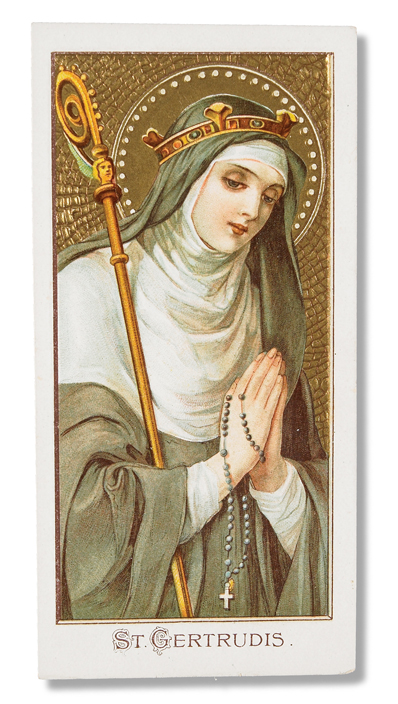
BENEDICT XVI GENERAL AUDIENCE (the entire text translated in English) from vatican.va
Dear Brothers and Sisters,
St Gertrude the Great, of whom I would like to talk to you today, brings us once again this week to the Monastery of Helfta, where several of the Latin-German masterpieces of religious literature were written by women. Gertrude belonged to this world. She is one of the most famous mystics, the only German woman to be called “Great”, because of her cultural and evangelical stature: her life and her thought had a unique impact on Christian spirituality. She was an exceptional woman, endowed with special natural talents and extraordinary gifts of grace, the most profound humility and ardent zeal for her neighbour’s salvation. She was in close communion with God both in contemplation and in her readiness to go to the help of those in need.
At Helfta, she measured herself systematically, so to speak, with her teacher, Matilda of Hackeborn, of whom I spoke at last Wednesday’s Audience. Gertrude came into contact with Matilda of Magdeburg, another medieval mystic and grew up under the wing of Abbess Gertrude, motherly, gentle and demanding. From these three sisters she drew precious experience and wisdom; she worked them into a synthesis of her own, continuing on her religious journey with boundless trust in the Lord. Gertrude expressed the riches of her spirituality not only in her monastic world, but also and above all in the biblical, liturgical, Patristic and Benedictine contexts, with a highly personal hallmark and great skill in communicating.
Gertrude was born on 6 January 1256, on the Feast of the Epiphany, but nothing is known of her parents nor of the place of her birth. Gertrude wrote that the L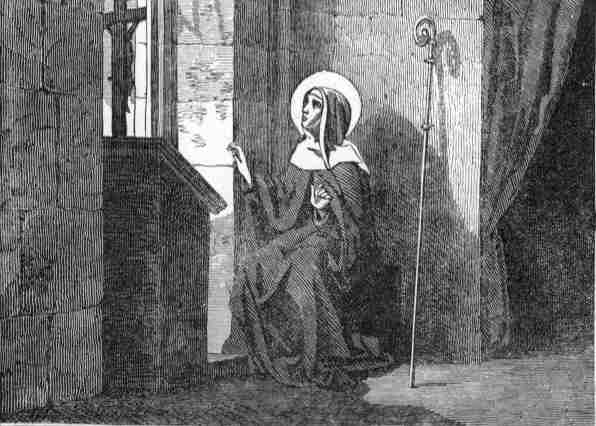 ord himself revealed to her the meaning of this first uprooting: “I have chosen you for my abode because I am pleased that all that is lovable in you is my work…. For this very reason I have distanced you from all your relatives, so that no one may love you for reasons of kinship and that I may be the sole cause of the affection you receive” (The Revelations, I, 16, Siena 1994, pp. 76-77).
ord himself revealed to her the meaning of this first uprooting: “I have chosen you for my abode because I am pleased that all that is lovable in you is my work…. For this very reason I have distanced you from all your relatives, so that no one may love you for reasons of kinship and that I may be the sole cause of the affection you receive” (The Revelations, I, 16, Siena 1994, pp. 76-77).
When she was five years old, in 1261, she entered the monastery for formation and education, a common practice in that period. Here she spent her whole life, the most important stages of which she herself points out. In her memoirs she recalls that the Lord equipped her in advance with forbearing patience and infinite mercy, forgetting the years of her childhood, adolescence and youth, which she spent, she wrote, “in such mental blindness that I would have been capable… of thinking, saying or doing without remorse everything I liked and wherever I could, had you not armed me in advance, with an inherent horror of evil and a natural inclination for good and with the external vigilance of others. “I would have behaved like a pagan… in spite of desiring you since childhood, that is since my fifth year of age, when I went to live in the Benedictine shrine of religion to be educated among your most devout friends” (ibid., II, 23, p. 140f.).
Gertrude was an extraordinary student, she learned everything that can be learned of the sciences of the trivium and quadrivium, the education of that time; she was fascinated by knowledge and threw herself into profane studies with zeal and tenacity, achieving scholastic successes beyond every expectation. If we know nothing of her origins, she herself tells us about her youthful passions: literature, music and song and the art of miniature painting captivated her. She had a strong, 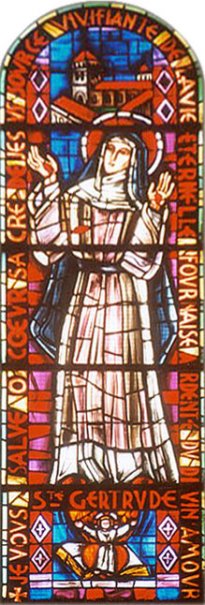 determined, ready and impulsive temperament. She often says that she was negligent; she recognizes her shortcomings and humbly asks forgiveness for them. She also humbly asks for advice and prayers for her conversion. Some features of her temperament and faults were to accompany her to the end of her life, so as to amaze certain people who wondered why the Lord had favoured her with such a special love.
determined, ready and impulsive temperament. She often says that she was negligent; she recognizes her shortcomings and humbly asks forgiveness for them. She also humbly asks for advice and prayers for her conversion. Some features of her temperament and faults were to accompany her to the end of her life, so as to amaze certain people who wondered why the Lord had favoured her with such a special love.
From being a student she moved on to dedicate herself totally to God in monastic life, and for 20 years nothing exceptional occurred: study and prayer were her main activities. Because of her gifts she shone out among the sisters; she was tenacious in consolidating her culture in various fields.
Nevertheless during Advent of 1280 she began to feel disgusted with all this and realized the vanity of it all. On 27 January 1281, a few days before the Feast of the Purification of the Virgin, towards the hour of Compline in the evening, the Lord with his illumination dispelled her deep anxiety. With gentle sweetness he calmed the distress that anguished her, a torment that Gertrude saw even as a gift of God, “to pull down that tower of vanity and curiosity which, although I had both the name and habit of a nun alas I had continued to build with my pride, so that at least in this manner I might find the way for you to show me your salvation” (ibid., II, p. 87). She had a vision of a young man who, in order to guide her through the tangle of thorns that surrounded her soul, took her by the hand. In that hand Gertrude recognized “the precious traces of the wounds that abrogated all the acts of accusation of our enemies” (ibid., II, 1, p. 89), and thus recognized the One who saved us with his Blood on the Cross: Jesus.
From that moment her life of intimate communion with the Lord was intensified, especially in the most important liturgical seasons Advent-Christmas, Lent-Easter, the feasts of Our Lady even when illness prevented her from going to the choir. This was the same liturgical humus as that of Matilda, her teacher; but Gertrude describes it with simpler, more linear images, symbols and terms that are more realistic and her references to the Bible, to the Fathers and to the Benedictine world are more direct.
Her biographer points out two directions of what we might describe as her own particular “conversion“: in study, with the radical passage from profane, humanistic studies to the study of theology, and in monastic observance, with the passage from a life that she describes as negligent, to the life of intense, mystical prayer, with exceptional missionary zeal. The Lord who had chosen her from her mother’s womb and who since her childhood had made her partake of the banquet of monastic life, called her again with his grace “from external things to inner life and from earthly occupations to love for spiritual things”. Gertrude understood that she was remote from him, in the region of unlikeness, as she said with Augustine; that she had dedicated herself with excessive greed to liberal studies, to human wisdom, overlooking spiritual knowledge, depriving herself of the taste for true wisdom; she was then led to the mountain of contemplation where she cast off her former self to be reclothed in the new. “From a grammarian she became a theologian, with the unflagging and attentive reading of all the sacred books that she could lay her hands on or contrive to obtain. She filled her heart with the most useful and sweet sayings of Sacred Scripture. Thus she was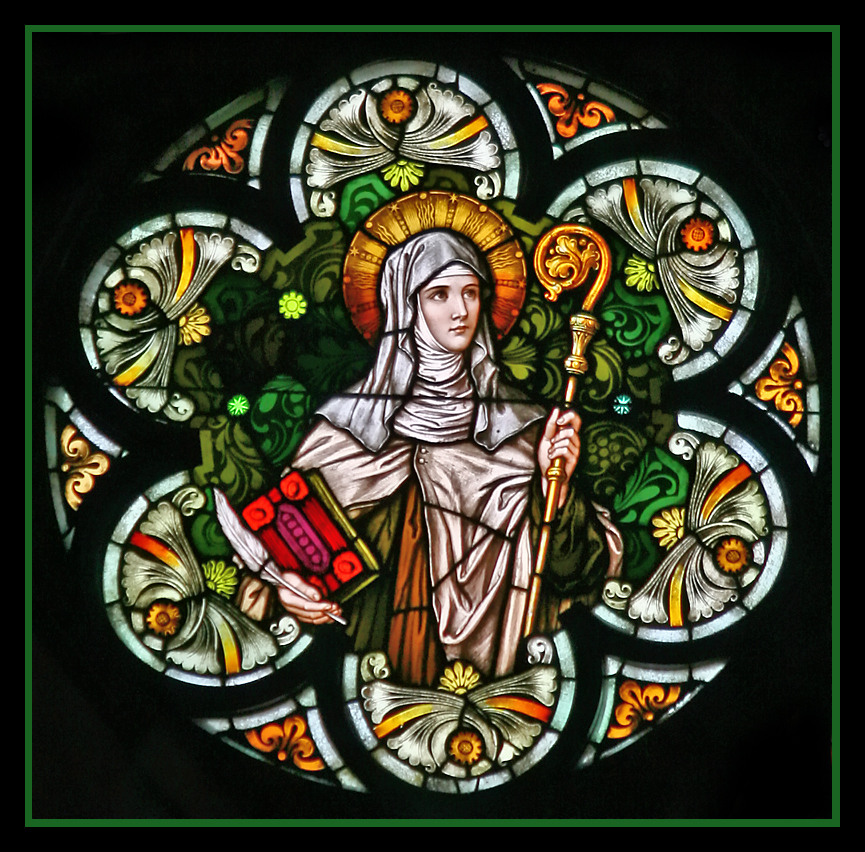 always ready with some inspired and edifying word to satisfy those who came to consult her while having at her fingertips the most suitable scriptural texts to refute any erroneous opinion and silence her opponents” (ibid., I, 1, p. 25).
always ready with some inspired and edifying word to satisfy those who came to consult her while having at her fingertips the most suitable scriptural texts to refute any erroneous opinion and silence her opponents” (ibid., I, 1, p. 25).
Gertrude transformed all this into an apostolate: she devoted herself to writing and popularizing the truth of faith with clarity and simplicity, with grace and persuasion, serving the Church faithfully and lovingly so as to be helpful to and appreciated by theologians and devout people.
Little of her intense activity has come down to us, partly because of the events that led to the destruction of the Monastery of Helfta. In addition to The Herald of Divine Love and The Revelations, we still have her Spiritual Exercises, a rare jewel of mystical spiritual literature.
In religious observance our Saint was “a firm pillar… a very powerful champion of justice and truth” (ibid., I, 1, p. 26), her biographer says. By her words and example she kindled great fervour in other people. She added to the prayers and penances of the monastic rule others with such devotion and such trusting abandonment in God that she inspired in those who met her an awareness of being in the Lord’s presence. In fact, God made her understand that he had called her to be an instrument of his grace. Gertrude herself felt unworthy of this immense divine treasure, and confesses that she had not safeguarded it or made enough of it. She exclaimed: “Alas! If you had given me to remember you, unworthy as I am, by even only a straw, I would have viewed it with greater respect and reverence that I have had for all your gifts!” (ibid., II, 5, p. 100). Yet, in recognizing her poverty and worthlessness she adhered to God’s will, “because”, she said, “I have so little profited from your graces that I cannot resolve to believe that they were lavished upon me solely for my own use, since no one can thwart your eternal wisdom. Therefore, O Giver of every good thing who has freely lavished upon me gifts so undeserved, in order that, in reading this, the heart of at least one of your friends may be moved at the thought that zeal for souls has induced you to leave such a priceless gem for so long in the abominable mud of my heart” (ibid., II, 5, p. 100f.).
Two favours in particular were dearer to her than any other, as Gertrude herself writes: “The stigmata of your salvation-bearing wounds which you impressed upon me, as it were, like a valuable necklaces, in my heart, and the profound and salutary wound of love with which you marked it. “You flooded me with your gifts, of such beatitude that even were I to live for 1,000 years with no consolation neither interior nor exterior the memory of them would suffice to comfort me, to enlighten me, to fill me with gratitude. 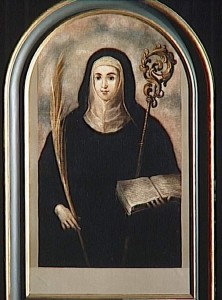 Further, you wished to introduce me into the inestimable intimacy of your friendship by opening to me in various ways that most noble sacrarium of your Divine Being which is your Divine Heart…. To this accumulation of benefits you added that of giving me as Advocate the Most Holy Virgin Mary, your Mother, and often recommended me to her affection, just as the most faithful of bridegrooms would recommend his beloved bride to his own mother” (ibid., II, 23, p. 145).
Further, you wished to introduce me into the inestimable intimacy of your friendship by opening to me in various ways that most noble sacrarium of your Divine Being which is your Divine Heart…. To this accumulation of benefits you added that of giving me as Advocate the Most Holy Virgin Mary, your Mother, and often recommended me to her affection, just as the most faithful of bridegrooms would recommend his beloved bride to his own mother” (ibid., II, 23, p. 145).
Looking forward to never-ending communion, she ended her earthly life on 17 November 1301 or 1302, at the age of about 46. In the seventh Exercise, that of preparation for death, St Gertrude wrote: “O Jesus, you who are immensely dear to me, be with me always, so that my heart may stay with you and that your love may endure with me with no possibility of division; and bless my passing, so that my spirit, freed from the bonds of the flesh, may immediately find rest in you. Amen” (Spiritual Exercises, Milan 2006, p. 148).
It seems obvious to me that these are not only things of the past, of history; rather St Gertrude’s life lives on as a lesson of Christian life, of an upright path, and shows us that the heart of a happy life, of a true life, is friendship with the Lord Jesus. And this friendship is learned in love for Sacred Scripture, in love for the Liturgy, in profound faith, in love for Mary, so as to be ever more truly acquainted with God himself and hence with true happiness, which is the goal of our life. Many thanks.
Tags: benedict xvi, catholic, catholic podcast, catholic prayer, cathollc spirituality, contemplation, famous mystics, heart, love, mystic, mystic of the Church, mystical experiences, sacred scripture, st gertrude, truth, women of the middle ages
This entry was posted on Wednesday, October 6th, 2010 at 6:47 pm
You can follow any responses to this entry through the RSS 2.0 feed.
Mary Eberstadt’s “The Loser Letters” is not your typical apologetic book, and that’s it’s beauty. Intelligent, funny, and so very thoughtful…that’s a great 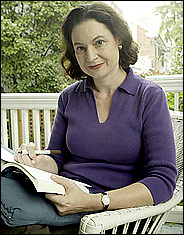 combination.  This book is a pro-religious satire of atheism, told from the point of view of a worldly and troubled twenty-something girl. Fans of C. S. Lewis will love this modern day Christian approach to the
combination.  This book is a pro-religious satire of atheism, told from the point of view of a worldly and troubled twenty-something girl. Fans of C. S. Lewis will love this modern day Christian approach to the 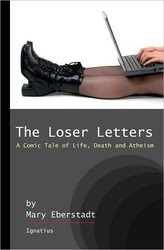 new atheist. Mary Eberstadt is fantastic…we can definitely look forward to more from her.
new atheist. Mary Eberstadt is fantastic…we can definitely look forward to more from her.
Pick up a copy of “The Loser Letters”
at ignatiuspress.com
[powerpress]
Tags: atheist, beauty, c s lewis, catholic, catholic podcast, catholic prayer, cathollc spirituality, ignatius press, love, mary eberstadt
This entry was posted on Sunday, August 29th, 2010 at 10:38 pm
You can follow any responses to this entry through the RSS 2.0 feed.
|
CONGREGATION THE MESSAGE
|
Tags: catholic, catholic podcast, catholic prayer, cathollc spirituality, Church, holy father, love, our lady of fatima, Russia
This entry was posted on Thursday, May 13th, 2010 at 12:24 am
You can follow any responses to this entry through the RSS 2.0 feed.

